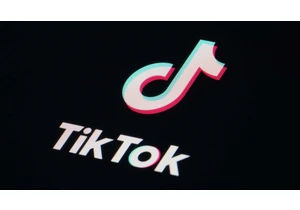The Greek Ministry of Culture and Sports, together with Microsoft and the digital cultural heritage company Iconem have unveiled a digital reconstruction of ancient Olympia, the site of the original Olympic Games, as it stood more than 2,000 years ago. A website and mobile app enables anyone to take a virtual guided tour through 27 sites such as the ancient Olympic Stadium, a gymnasium where athletes trained, and temples devoted to the Greek gods Hera and Zeus. The basic models of the buildings were constructed using hundreds of thousands of images taken with traditional cameras and drones and stitched together using AI technology, according to Microsoft. The models were then enhanced using information from archaeological research to help viewers understand what the sites would have looked like at the time. [Animation: Microsoft]“This contributes to the research and documentation of monuments [and] supports the tourism and extroversion of the country as a modern and strong democracy with a long historical and cultural past and unquestionable development dynamics,” Lina Mendoni, Greece’s minister of culture and sports, said in a statement. One digital tour option allows viewers to step through the traditional five days of activity around the historic Olympic Games, complete with explanatory audio and text—even if they’re unable to physically visit Greece—people involved in the project said at a Wednesday press conference. It’s a way to help people around the world understand and celebrate the Games, when different Greek cities would put aside differences and enforce a temporary armistice if at war. “What ancient Greece created is what humanity around the world still needs, maybe even more today than 25 centuries ago,” Microsoft President Brad Smith said in a video appearance Wednesday. [Animation: Microsoft]Those who do make it to Greece can also explore a version of the project at the Athens Olympic Museum using Microsoft’s HoloLens 2 virtual reality tool.
The digital tour, which for many may bring back memories of exploring history and geography in the 1990s through Microsoft’s CD-ROM encyclopedia Encarta, is part of the company’s AI for Cultural Heritage project. It has also produced digital tools around works in the Metropolitan Museum of Art, the Inuit language Inuktitut, and 20th-century American artist Sol LeWitt, whose drawings are displayed on gallery walls according to his precise, code-like instructions. “As we have learned more about the dimensions that make up cultural heritage, we’ve concluded that preserving [it] isn’t something that is solely nice to have or nice to do,” Smith noted in a blog post announcing the initiative in 2019. “It’s sometimes imperative to the well-being of the world’s societies.”
Accedi per aggiungere un commento
Altri post in questo gruppo

Rumors of a Tumblr comeback have been bubbling for a couple of years—think a pair of Doc Martens here, a splash of pastel hair dye there. Now, Gen Z is embracing the platform as a refuge from an i

You can’t talk about the manosphere without mentioning Andrew Tate. The British-American influencer and former professional kickboxer built his platform by promoting misogynistic ideas—claiming wo

UFC is joining up with Facebook’s parent company


As the deadline to strike a deal over TikTok approaches this week, President Donald Trump has signaled that he is confident his administrat


A top employee of billionaire Elon Musk who is now working in the
